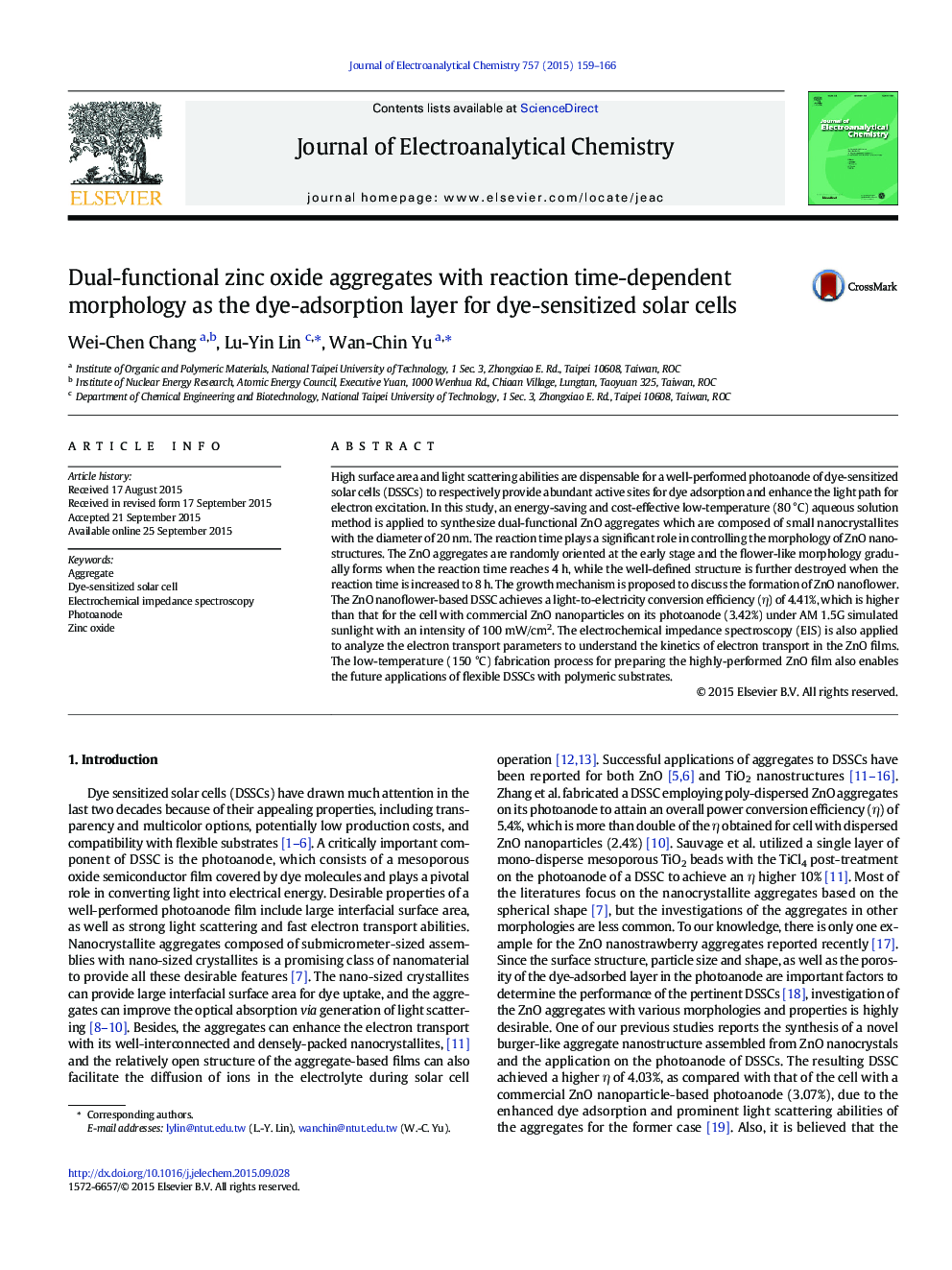| کد مقاله | کد نشریه | سال انتشار | مقاله انگلیسی | نسخه تمام متن |
|---|---|---|---|---|
| 218216 | 463188 | 2015 | 8 صفحه PDF | دانلود رایگان |
• Dual-functional ZnO aggregates are made using a low temperature aqueous solution.
• The reaction time plays a key role to control the morphology of ZnO aggregates.
• ZnO nanoflowers present higher dye loading and better light scattering abilities.
• ZnO nanoflower dye-sensitized solar cell attains a conversion efficiency of 4.41%.
• Low temperature annealing (< 150 °C) of ZnO film is a benefit to polymeric substrate.
High surface area and light scattering abilities are dispensable for a well-performed photoanode of dye-sensitized solar cells (DSSCs) to respectively provide abundant active sites for dye adsorption and enhance the light path for electron excitation. In this study, an energy-saving and cost-effective low-temperature (80 °C) aqueous solution method is applied to synthesize dual-functional ZnO aggregates which are composed of small nanocrystallites with the diameter of 20 nm. The reaction time plays a significant role in controlling the morphology of ZnO nanostructures. The ZnO aggregates are randomly oriented at the early stage and the flower-like morphology gradually forms when the reaction time reaches 4 h, while the well-defined structure is further destroyed when the reaction time is increased to 8 h. The growth mechanism is proposed to discuss the formation of ZnO nanoflower. The ZnO nanoflower-based DSSC achieves a light-to-electricity conversion efficiency (η) of 4.41%, which is higher than that for the cell with commercial ZnO nanoparticles on its photoanode (3.42%) under AM 1.5G simulated sunlight with an intensity of 100 mW/cm2. The electrochemical impedance spectroscopy (EIS) is also applied to analyze the electron transport parameters to understand the kinetics of electron transport in the ZnO films. The low-temperature (150 °C) fabrication process for preparing the highly-performed ZnO film also enables the future applications of flexible DSSCs with polymeric substrates.
Figure optionsDownload as PowerPoint slide
Journal: Journal of Electroanalytical Chemistry - Volume 757, 15 November 2015, Pages 159–166
